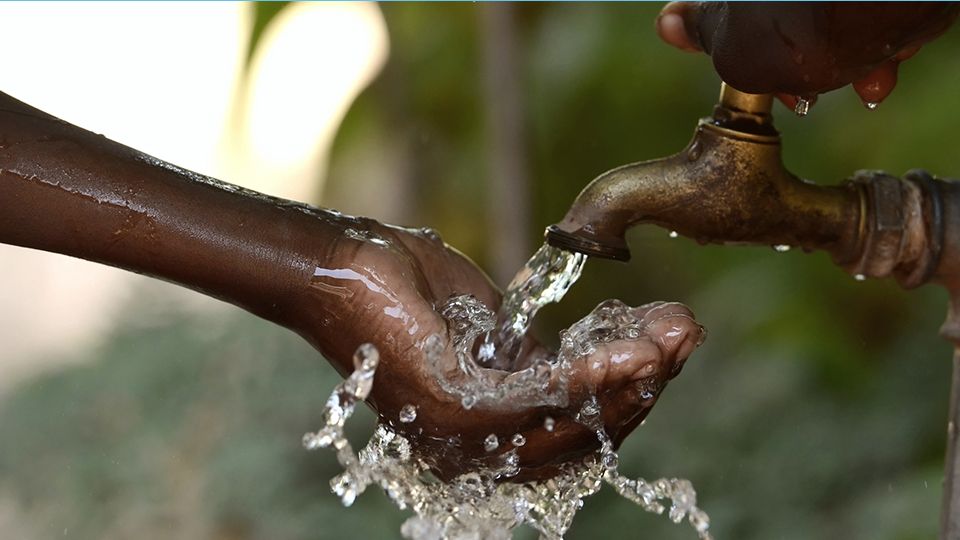This week marks World Water Week, an annual week-long conference organised and led by the Stockholm International Water Institute (SIWI) which addresses a wide range of issues concerning the development of the world’s water supply and sanitation needs.
2023’s theme, ‘Seeds of Change: Innovative Solutions for a Water-Wise World’, comes at a time of great upheaval. According to the Global Commission on the Economics of Water (GCEW), the world faces a growing tragedy and, without bold and concerted local, national and global actions, the problems of too little, too much and too dirty water – inextricably linked to climate change and the loss of biodiversity – will only get worse.
With the commission warning that, for the first time in history, human activity and practices have put the global water cycle on an unsustainable course, panellists at this year’s conference sought to highlight the power of communities, cooperation and progressive investment strategies.
“We must rethink the way we collaborate on water issues, to convert water from an immense global tragedy to a great global opportunity,” said Aude Farnault, water policy analyst at the Organisation for Economic Cooperation and Development.
On that note, ESG Clarity highlights five notable discussion points from the conference.
Emphasis on collective action
One of the biggest recurring themes of the week was the power of collective action. The World Wide Fund for Nature (WWF) defines collective action – where companies work with others as part of a robust water stewardship strategy – takes the form of participation in public fora to address water management issues, supporting freshwater conservation and water management projects alongside non-governmental organisations or other companies that pool technical, human and financial resources.
Sarah Dankens, water stewardship and stakeholders engagement manager at Danone, shared a case study based in Mexico, where small strawberry farmers are struggling with low productivity and quality as a result of a high level of water stress, leading to excessive irrigation.
Despite this, the Madre Tierr’ project, co-built with DanTrade, Danone Ecosystem and other private and public actors, was set up to establish a model of regenerative agriculture that could be applied to other fruit sectors. According to Dankens, this led to an increase of 30% in farmer incomes, alongside cutting water usage by 50%.
New models of governance
Other ideas were also explored at the conference, including a significant shift in stakeholder groups mobilising to solve ‘wicked water problems’; problems that defy standard solutions and require us to assess subjectivity related to the inputs and outputs of a given situation, such as incomplete or contradictory knowledge and large economic burdens.
“After spending several decades as an entrepreneur, I grew fundamentally dissatisfied with what I was seeing in terms of the allocation of time, energy and talent from entrepreneurs, and capital from investors,” said Tom Higley, CEO at X Genesis, a company which specialises in supporting investors to solve wicked water issues.
“It seemed that far too many of those resources were going into things that mattered very little, and that breakdown of alignment between value creation on the one hand, and the resources to generate that value on the other, seemed like it needed attention.”
In response, catalytic communities have begun to emerge as new models for collaboration and governance, marking a shift to aligned action where stakeholders are expanding their network of engagement to include entrepreneurs, investors and multinationals to help identify and support innovative solutions and address complex water governance challenges.
Digital transformation and sharing data points
Across the conference, attention was also given to the digital transformation occurring in the water sector, as well as the sharing of data and information concerning water availability and patterns, both considered essential for economic development and water security.
With the help of digital technologies, the water sector can monitor and manage water resources more effectively, reduce water loss and optimise water use for agriculture and other purposes. As part of a seminar discussing how to harness the digital revolution for water innovation, Anton Urfels, senior water scientist at the International Rice Research Institute, explains how machine learning models allow stakeholders to run ‘what if’ scenarios as well as ask for interpretations and diagnostics to map different outcomes, a crucial data point for investment decision makers.
The effective management and governance of water resources also depends on information and data being readily available so that stakeholders can make informed decisions. To that end, during the conference, the International Union for Conservation of Nature and the Organisation for Security and Co-operation in Europe launched their Data and Information Exchange Toolkit, designed to support the proper management of water resources across national boundaries.
Empowering women
Another large area of social strategy in the water sector is addressing gender inequality and empowering women to take an active role in climate adaptation measures.
One example of this is the Water Justice Fund, an initiative by Simavi and Women Win, a pooled-funding mechanism that was launched to position women and girls at the forefront of climate action. Using shared governance and participatory grantmaking mechanisms, their aim is to shift power and decision-making to women living in the remote, underserved and oppressive environments most likely to experience water vulnerability, such as Kenya, Nepal and Bangladesh.
“A lot of climate financing is not going to the countries, communities or people that need it the most,” said Veerle Ver Loren Van Themaat, director of fundraising and external engagement at Simavi.
“We thought a lot about how we can change this and asked ourselves how we can change how funding structures are managed. We see that a lot of climate finance is going to large scale infrastructural projects, but how can we make sure that funding is also going to women and supporting locally led initiatives? So, we started with the Water Justice Fund.”
Innovation in water finance
As part of a series of seminars across the week organised by SIWI entitled What Sparks and Fuels Innovation in Financing Water?, speakers from across the water sector discussed the challenges and opportunities for scaling up financing.
Across three sessions, panellists talked about how to increase investment to meet the water sustainable development goals (SDGs), organising finance to meet the GCEW’s call for collective action launched at the UN 2023 Water Conference in New York in March, and exploring investment strategies capable of accelerating the deployment of decentralised solutions.
As the panels discussed, the human right to water is meaningless if water is not affordable. It is also meaningless if water infrastructure is not financeable. Via ideas such as the cessation of under-pricing water, phasing out subsidies in agriculture and water use and establishing just water partnerships, financiers hope to achieve an inclusive and just water future that helps achieve all SDGs.








